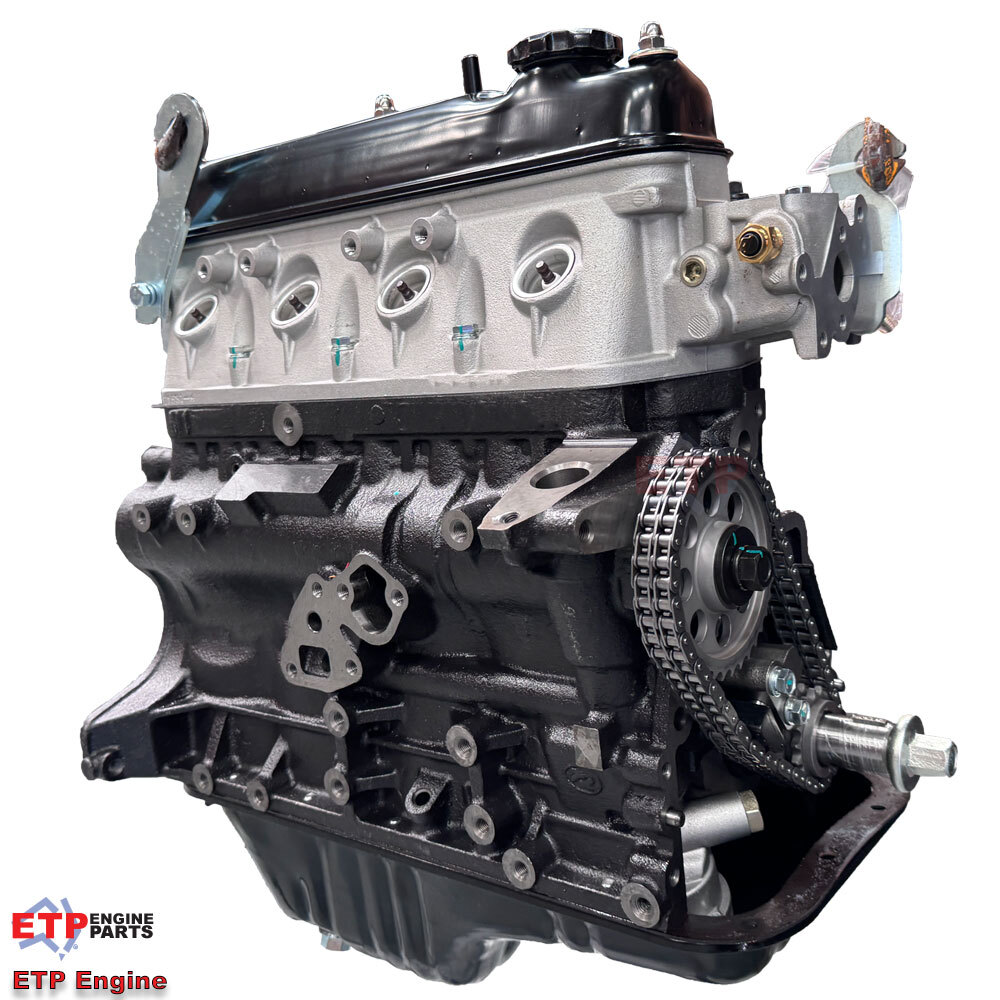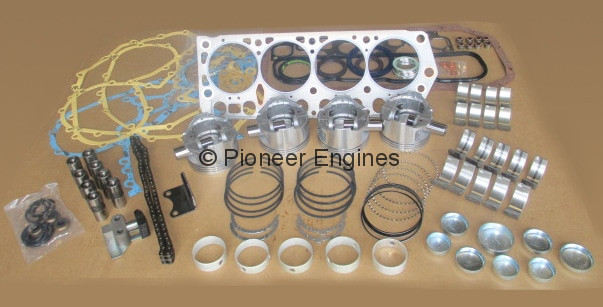Why the Engine Is the very best Selection for Performance and Effectiveness in Your Automobile
The engine remains an essential component in automobile layout, mainly as a result of its significant impact on both efficiency and efficiency. As improvements in technology allow smaller sized engines to deliver amazing power while maximizing fuel economic climate, the assimilation of features such as turbocharging and hybrid systems ends up being significantly important. These advancements not just enhance driving experience but likewise address ecological problems. However, the concern develops: just how do these elements coalesce to redefine our understanding of automobile performance? Discovering this equilibrium discloses much deeper understandings right into the future of engine layout.
Comprehending Engine Types
Understanding the various kinds of engines is crucial for optimizing efficiency and performance in vehicle style. The primary engine types consist of inner burning engines (ICE), electric engines, and hybrid systems, each offering distinctive benefits and restrictions.
Internal burning engines, which can be additional categorized into fuel and diesel variations, rely upon the combustion of gas to produce power. Gasoline engines typically give greater RPMs and better acceleration, while diesel motor are understood for their torque and fuel efficiency, making them excellent for durable applications.
Electric engines, on the other hand, utilize electrical motors powered by batteries or fuel cells. They offer rapid torque shipment, resulting in smooth velocity and lower exhausts. The effectiveness of electric engines is dramatically higher than that of ICEs, making them a popular selection for eco-conscious consumers.
Hybrid systems incorporate both internal burning and electric engines, leveraging the staminas of both technologies. They enhance fuel usage by using electrical power at lower rates and switching over to gas or diesel for higher speeds or larger loads.
Choosing the best engine kind is important for attaining preferred efficiency metrics and environmental sustainability in contemporary auto engineering.
The Effect of Engine Dimension
Engine size often plays an essential duty in establishing an automobile's performance and efficiency. Typically measured in liters or cubic centimeters, engine size directly influences the power output and torque qualities of a car.
Nevertheless, boosted engine dimension commonly associates with reduced gas effectiveness. Larger engines take in more fuel, leading to higher exhausts and functional prices. Manufacturers have to stabilize the need for power with the requirement for fuel economy. Smaller sized engines can provide sufficient performance for everyday driving while advertising much better effectiveness, making them a popular selection in mid-size and small cars.
Furthermore, improvements in engine design, such as turbocharging and straight fuel shot, allow smaller sized engines to achieve power degrees comparable to their bigger counterparts. This fad highlights the importance of not exclusively concentrating on engine dimension but additionally thinking about overall lorry style and technology (4y engine). Eventually, the impact of engine dimension on efficiency and effectiveness emphasizes the requirement for customers to evaluate their certain driving choices and needs when choosing a vehicle
Advanced Engine Technologies
Advancements in engine technologies have actually dramatically improved the landscape of automotive efficiency and effectiveness, structure upon the fundamental concepts established by engine size. Significantly, innovations such as turbocharging and straight gas injection have enabled smaller engines to deliver power levels previously connected with bigger equivalents. Turbochargers press air going into the engine, enabling raised power result without an equivalent increase in engine dimension, while straight shot maximizes gas distribution, boosting burning performance.
In addition, variable shutoff timing systems have actually emerged as an important modern technology, permitting engines to readjust shutoff operation based on driving conditions. This adaptability boosts both efficiency throughout acceleration and fuel efficiency throughout travelling. Crossbreed and electric engine technologies further illustrate the change in vehicle style, integrating conventional internal burning engines with electrical motors to make the most of efficiency while lowering exhausts.
Moreover, developments in materials scientific research have resulted in lighter, more sturdy engine elements, further boosting efficiency and longevity. The assimilation of sophisticated electronics and engine control devices likewise allows for real-time changes, making certain ideal efficiency throughout various problems. Collectively, these innovative engine innovations not just enhance vehicle efficiency but likewise add to a much more sustainable vehicle future, demonstrating the recurring development of engine layout.
Balancing Power and Performance
Striking a balance in between power and effectiveness is critical in contemporary auto style as suppliers seek to satisfy increasingly rigid exhausts guidelines while pleasing consumer demand for efficiency (4y engine). The challenge depends on optimizing engine attributes to supply robust power outcome without giving up fuel economic climate
To achieve this balance, designers use various methods, such as turbocharging, official source which boosts engine power by requiring in even more air, permitting a smaller engine displacement that boosts gas efficiency. Variable valve timing innovations additionally play a significant function, making it possible for engines to adjust their performance attributes based upon driving problems, thus improving both power and effectiveness.
In addition, innovations in materials and manufacturing techniques have caused lighter engine elements, which minimize total lorry weight and improve fuel efficiency without compromising power. Hybrid technologies have actually likewise become a sensible option, integrating typical inner burning engines with electrical powertrains to give an increase in performance while maintaining lower emissions.

Future Trends in Engine Design

In addition, the advancement of innovative materials, such as high-strength alloys and light-weight compounds, hop over to here is set to change engine components. These products not only decrease weight yet also boost thermal efficiency, consequently optimizing performance. In addition, manufacturers are checking out variable compression proportions, allowing engines to adapt to various driving conditions, improving both power outcome and gas economic climate.
Additionally, the rise of expert system and equipment knowing in engine style is making it possible for predictive maintenance and real-time performance optimization. This innovation can lead to engines that self-adjust for maximum effectiveness based upon driving patterns.

Verdict
Finally, the engine functions as an important element in attaining optimum efficiency and performance in modern-day vehicles. Advanced technologies, such as turbocharging and hybrid systems, enhance power output while reducing fuel usage and discharges. The interplay between engine size and design remains to develop, driving developments that balance exciting performance with environmental sustainability. As automobile engineering progresses, the focus on creating efficient, effective engines will certainly continue to be vital fit the future of transportation.
Additionally, innovations in engine layout, such as turbocharging and direct fuel shot, enable smaller engines to attain power degrees comparable to their larger equivalents.Developments in engine technologies have actually considerably reshaped the landscape of auto performance and performance, structure upon the foundational principles established by engine size. Turbochargers press air entering the engine, permitting for enhanced power result without a matching increase in engine dimension, while direct shot optimizes gas delivery, boosting combustion performance.
Hybrid and electrical engine technologies additionally illustrate the change in automotive style, incorporating standard inner combustion engines with electrical motors to check my source make the most of performance while decreasing exhausts.
Collectively, these sophisticated engine technologies not just boost car efficiency yet also contribute to a much more lasting automobile future, showing the continuous evolution of engine layout. (4y engine)
Comments on “The Best Upgrades for Improving the Efficiency of Your 4Y Engine”